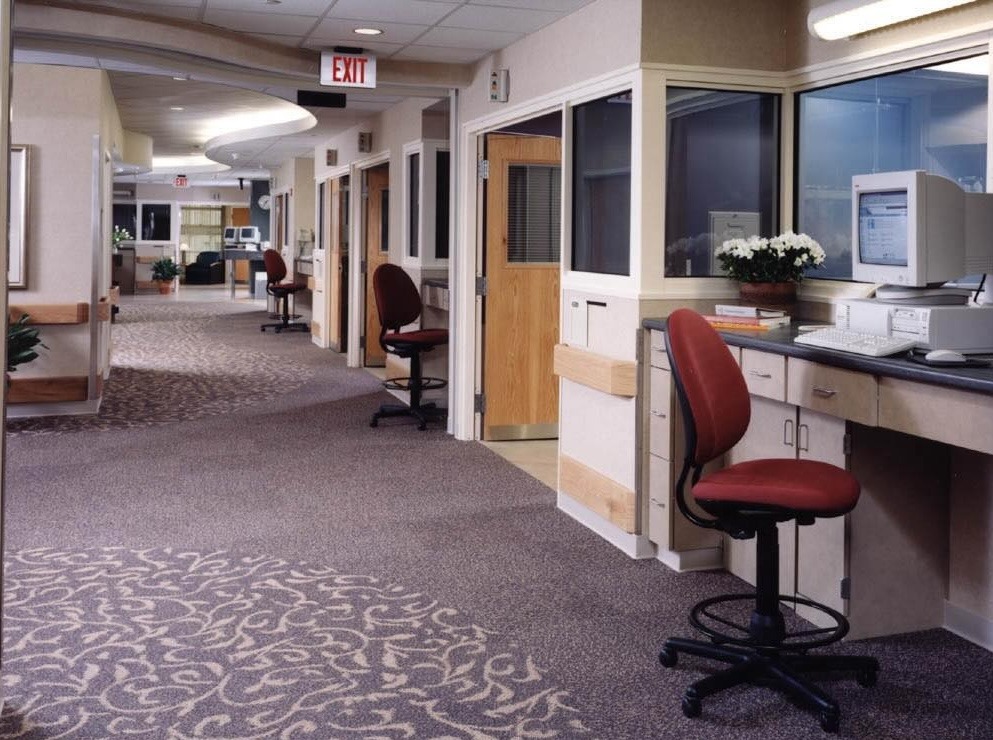
Jason Schroer, Director, HKS Houston, asked if there was anything the design community could do to influence the types of questions on the HCAHPS survey. I don't think so. It's the government.
Jim Hunt, President, Behavioral Health Facility Consulting, LLC felt that communication with patients should be more important to patients than design. I agree, but think design can also support and enhance communication between caregivers and patients.
Steven Langston, Design Director, RLF, thought the Johns Hopkins study reinforced that taking a more disciplined, evidence-based approach to design healthcare facilities is important. Who can argue with this?
Robert Lee, Architect, Healthcare Acquisition Facilities and Administration Consultant, reminded us that survey results are often skewed by the way the questions are asked. Good point.
Naomi Sachs, Ph.D. Student at Texas A&M, called the study's conclusions sort of a "duh" moment, saying that healthcare consumers aren't stupid. But the study's findings are much more nuanced. Yes, indeed.
Letter to the Editor
And finally, Frank Zilm posted a letter that he and colleagues sent last week to the Journal of Hospital Medicine (who published the study) and National Public Radio. It was pretty darn good.
We complement Dr. Siddiqui, et. al., on their article published in the Journal of Hospital Medicine. Analysis of the role of new physical environments on care and patient satisfaction is sparse and desperately needed for this high-cost resource in health care delivery.
A review of the original article leads us to the following observations/suggestions:
- The focus of the study is on perceived patient satisfaction based on two survey tools. As noted by the authors, there are multiple factors that must be considered related to facilities – their potential contribution to patient infections and falls; the ability to accommodate new technology and procedures; and the shifting practice models such as the shift from inpatient to ambulatory care. Patient focused care concepts are only one elements in the design challenge and costs.
- The reputation of Johns Hopkins as a major tertiary referral center is well known internationally and it would seem reasonable to assume that many of the patients selected, or were referred to, the institution based on its physicians. It does not seem unreasonable to assume that facilities would play a secondary role and that perceived satisfaction would be high regardless of the physical environment. As noted by the authors, the transferability of this finding to community hospitals, and other settings is unknown.
- Patient satisfaction is one important element in design, but staff satisfaction and efficiency are also significant elements in maintaining a high quality healthcare system. We need tools to assess the relationship between staff retention, stress levels, and medical errors and the physical environment.
- The focus of the article is on the transferability of perceived satisfaction with environment to satisfaction with physician care. Previous published studies have shown a correlation with environments and views from patient rooms with reduced patient stress levels and shorter lengths of stay. Physical space should not be disregarded as a component of effective patient care.
We are committed to seeking designs that are effective, safe, and adaptable to long term needs. We support additional research in this and other related design issues. We hope that the improvements in patient and family environments labeled as “patient focused” will continue to evolve to respond to real health care needs. It would be unfortunate if progress is diverted by misinterpretation of the articles findings.
Sincerely yours,
Frank Zilm, D.Arch., FAIA, FACHA
President, Academy of Architecture for Health Foundation
Anthony J. Haas, FAIA, FACHA
President, American College of Healthcare Architects
D. Kirk Hamilton, FAIA, FACHA, EDAC
Professor of Architecture, Texas A&M University
Interim Director, Center for Health Systems & Design
David Allison FAIA, FACHA, NCARB
Alumni Distinguished Professor/Director
Graduate Studies in Architecture + Health
Clemson University
Charles H. Griffin AIA, FACHA, EDAC
Senior Principal
WHR Architects, Inc.
What do you think? Add your voice to the discussion on the ACHA, Healthcare Design Connection, AIA/AAH, or HERD LinkedIn Groups or post your comments below.
P.S. Please do me a favor -- if you liked this post and like this blog, please share it with others by sending them the link and/or post it on your Twitter, LinkedIn, or Facebook, etc. Also, don't forget to subscribe, so you'll get emails when new content is posted. Thanks!






